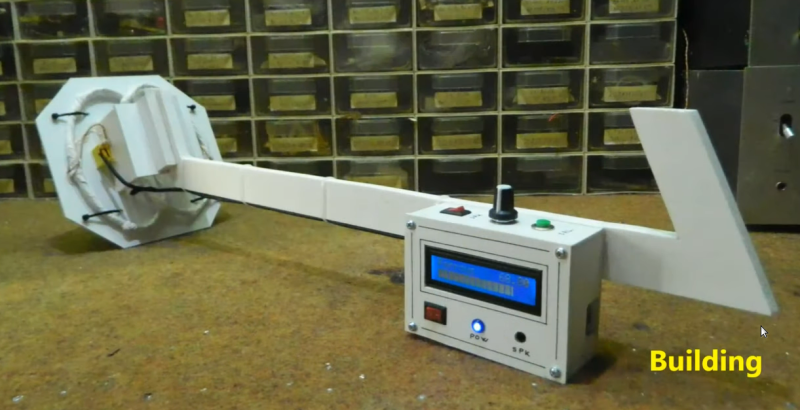A beach is always a relaxing summer vacation destination, a great place to hang out with a drink and a book or take a swim in the ocean. For those who need a more active beach-going activity with an electronics twist, though, metal detecting is always a popular choice too. And, of course, with an Arduino and some know-how it’s possible to build a metal detector that has every feature you could want from even a commercial offering.
This build comes to us from [mircemk] who built this metal detector around an Arduino Nano and uses a method called induction balance detection to find metal. Similar to how radar works, one coil sends out a signal and the other listens for reflections back from metal objects underground. Building the coils and determining their resonant frequency is the most important part of this build, and once that is figured out the rest of the system can be refined and hidden treasure can easily be unearthed.
One of the more interesting features of this build is its ability to discriminate between ferrous and non-ferrous metals, and it can detect large metal objects at distances of more than 50 cm. There are improvements to come as well, since [mircemk] plans to increase power to the transmission coil which would improve the range of the device. For some of [mircemk]’s other metal detectors, be sure to check out this one which uses a smartphone to help in the metal detection process.
















Great, add a radio and GPS, stick it on the bottom of your robot, and let it loose in the fields. Coins, gold, treasure, bullets, unexploded ordnance, yeah.
Why would you build one you have to carry? Or even get up off your towel? Wheels, a camera, and a sifting basket. All remote. Go find me treasure and bring it back. Or get a kid to do it for you.
Or at least round the edges of the handle so it’s less of an ergonomic nightmare
mechanic wave will be better
hybrid and ai too ;)
please add linux not arduino
Why? Linux requires is a complete OS, requiring a more powerful processor, requiring more power.
The world is full of project built on RaspPI, and running Linux, which would have been far more efficiently done using a microcontroller.
It’s nice to see someone using the right tool for the right job, just for once!
There are other metal detector projects using AVR and PIC. This one is nice and simple. I do wonder why the 7.64khz frequency was chosen instead of something in the 15k to 20k range wasn’t used. As far as I know, the higher frequencies seem to be better at picking out objects. I read about metal detectors some and see the newer designs have even moved up to around 70khz for the more expensive units. I think using a bit higher voltage with a MOSFET to drive the TX coil would make the detector more useful as far as sensitivity and power.